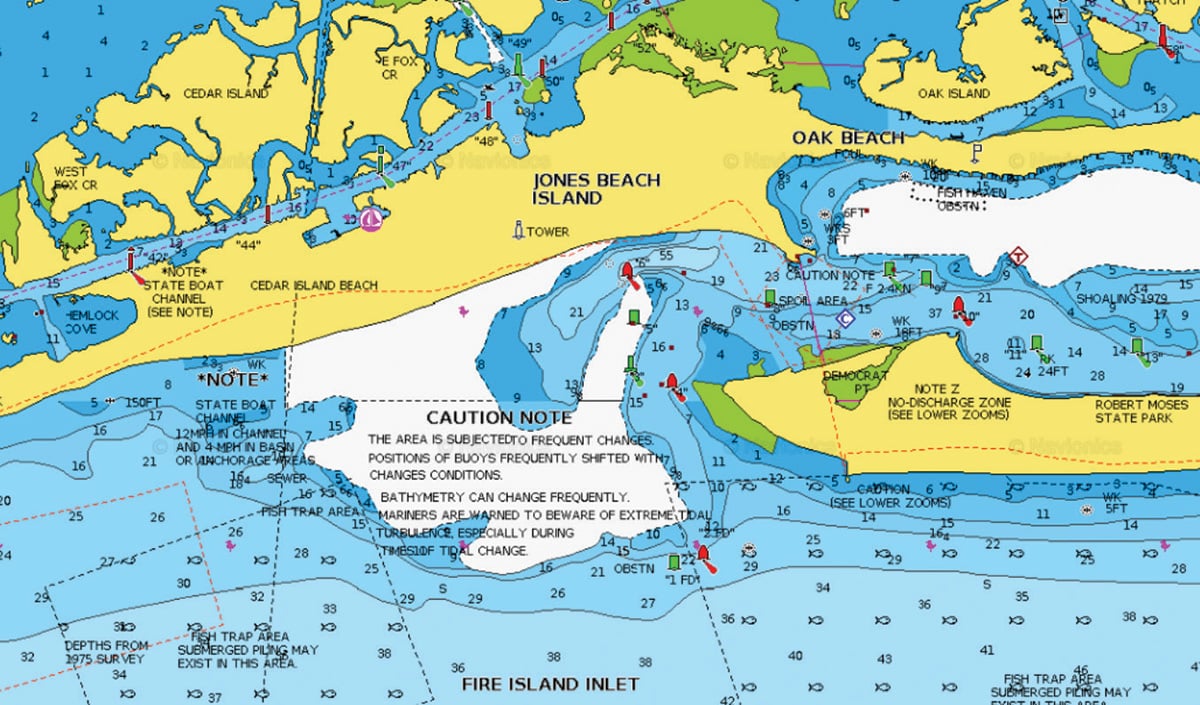
40 37.20’ N / 73 19.50’ W
Heading west through Fire Island Inlet and just before you approach the deep blue, you’ll pass the backside jetty of Democrat Point on the left, while on the right you’ll pass the nostalgic but severely damaged gateway of what used to be the rock studded peninsula of the Sore Thumb that at one time stood out boldly from the Oak Beach shore of the inlet. Once you pass these landmarks and continue west, you’ll encounter the expanse of the West Bar.
As with any sandbar that builds up in front and around any major inlet, the West Bar is no different in that, with every severe nor’easter or passing offshore storm that pounds the ocean beaches and inlets, Mother Nature has a way of making navigating waterways like Fire Island Inlet challenging, and at time impassable. What does it all mean to fishermen during the fall season? It means tidal rips, turbulent currents, huge breakers, and cuts and drains to name a few. To an inexperienced boater and fisherman, it can spell danger or worse, disaster. However to experienced captains these conditions at this time of the year spell bass, bass and more bass.
With that in mind I reached out to one of the East Coast’s most knowledgeable skippers, Capt. Kenny Higgins of the Captree based open boat Captree Pride. Capt. Ken has spent a lifetime on these waters and knows all there is to know about bass fishing at the West Bar. I asked Ken for some advice for anglers looking for the right time to hop a ride on an open boat for their best shot at a bass blitz, and for anglers looking to score big on private boats.
For private boat anglers, first and foremost is safety. The mouth of Fire Island Inlet is no joking matter in inclement weather or when wind and tide clash, creating dangerous white water conditions for any small craft attempting to run the inlet. If you’re unsure of your boating skills and want to catch striped bass, just head for a half day on one of the several head boats that sail for stripers during the fall run from nearby Captree State Park. However you do it, Ken favors south, southwest or west winds blowing 15 to 20 knots for the best fishing, and the harder the wind blows the better the fishing.
Ken suggests that do-it-yourselfers anchor in 10 feet of water just outside the breakers, and send down a chum pot of frozen clam pulp. When it comes to rigging, he favors a fish-finder rig with a 1- or 2-ounce sinker, capped off with a 5/0 circle hook baited with half of a fresh or lightly salted clam. Ken also suggests trying the rips that run alongside the north side of the bar, which sometimes produce when the bite is off in the turbulence of the bar. In the rips, Ken recommends going to 2- or 4-ounce sinkers. As for tide, Ken says when it is rough, both the incoming and the outgoing are productive, otherwise the outgoing, which sends your chum into the white water on the bar, has the edge.
Now there is no reason why you can’t be part of the fall striper action in this area, and maybe even take home some tasty bass fillets. If you don’t have a boat of your own, jump aboard one of the Captree open boats that will be targeting stripers this fall.



